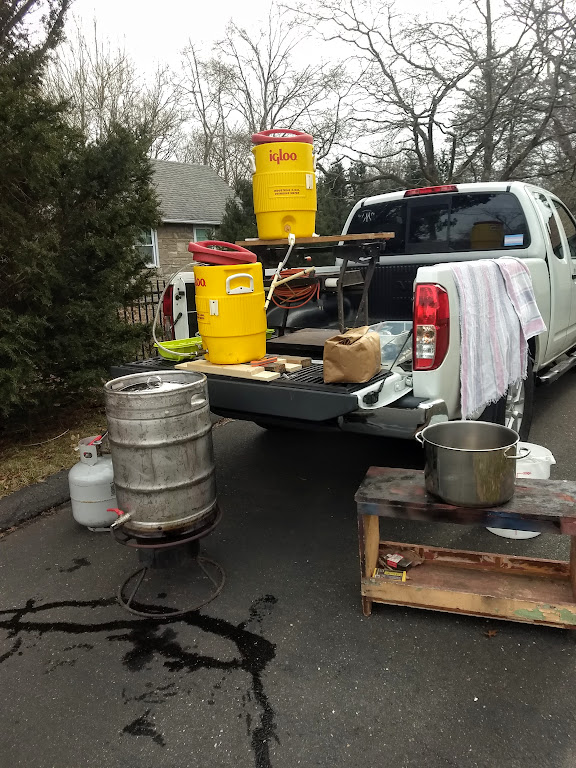I find myself at a crossroads and need to decide which path makes the most sense. I currently brew with a 10 gallon brew kettle fired on propane and a 10 gallon SS Brewtech mashtun. I brew in an unheated shop (but have lots of space) so there are usually a couple weeks a year I can’t brew; I refuse to wash the equipment below 40 degrees. I want to put all my gear on a dedicated beer stand instead of a couple different stands. My father is willing to weld the stand for me once I lay it out. I’ve gotten my process refined and usually hit 85%+ mash efficiency and almost that in brewhouse efficiency. I’m also getting old enough so that hefting the BK to dump into the MT isn’t as easy as it used to be, so I’ll be adding a second pump with this transition.
With the upgraded stand I also want to upgrade my volume ability to 10 gallon batches. With the mash tun, on a cold day I lose 1.5-2 degrees over the 60 minutes. When I brew in good weather the drop isn’t enough to worry about. Hence I want a low cost solution and was thinking a RIMS would be a low cost viable solution. If I upgrade to 20 gallon brew kettles (probably SS Brewtech, brewmaster editions) is the rims going to solve my cold weather mash issue?
Is it worth my time to explore an all in one system before going down the path of upgrading? I do like perfecting my process and enjoying the high efficiencies…and going 3v with my current system would be pretty inexpensive, I think.
Should I rethink my approach?
With the upgraded stand I also want to upgrade my volume ability to 10 gallon batches. With the mash tun, on a cold day I lose 1.5-2 degrees over the 60 minutes. When I brew in good weather the drop isn’t enough to worry about. Hence I want a low cost solution and was thinking a RIMS would be a low cost viable solution. If I upgrade to 20 gallon brew kettles (probably SS Brewtech, brewmaster editions) is the rims going to solve my cold weather mash issue?
Is it worth my time to explore an all in one system before going down the path of upgrading? I do like perfecting my process and enjoying the high efficiencies…and going 3v with my current system would be pretty inexpensive, I think.
Should I rethink my approach?





